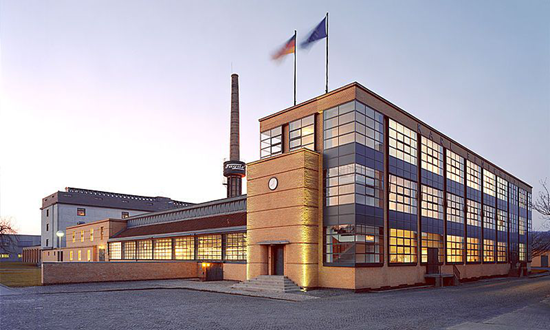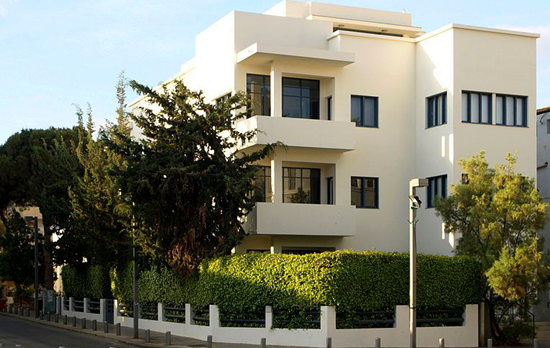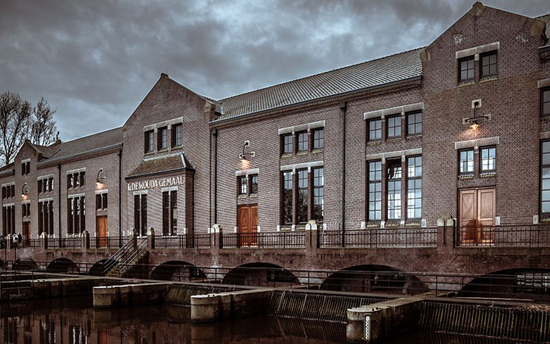
10 Incredible Modern Buildings that Became UNESCO World Heritage Sites
By Morris M, Urban Ghosts Media, 1 August 2016.
By Morris M, Urban Ghosts Media, 1 August 2016.
Utter the words ‘UNESCO World Heritage Site’ to people, and many will likely start picturing grand German castles, ancient temples and preserved English country cottages. In some cases, they’d be absolutely right to do so. But the World Heritage list includes a great deal of buildings that defy such simple stereotypes. In fact, some of them are radically modern.
1. Villa Tugendhat (Czech Republic)
Image: Petr1987
‘A dream made from glass’ is how some have described the Czech Republic’s most-iconic modern building. Designed by architect Mies van der Rohe in the late-1920s, the Villa Tugendhat completely changed what a house could be. A simple, white shape that seemed to float effortlessly above its long walls of glass, the Villa was one of the first homes in the world to be built using factory methods. Such cutting-edge design didn’t come cheap. It cost 5 million Czech crowns to build - around 15 times the cost of a ‘typical’ villa of the day.
In terms of history, the Villa Tugendhat could hardly be more important. Owned by a wealthy Jewish family who fled, it became a symbol of everything that had to be left behind when the Nazis steamrollered into Czechoslovakia. In 1992, it was the building where the Czech and Slovak leaders agreed to dissolve the republic, creating the modern nations of Slovakia and the Czech Republic. But for today’s visitor, it’s likely to be the beauty of the place that strikes them. Seen on a snowy winter’s day, the building practically seems to disappear, leaving only a crisp white outline against the blazing winter sun.
2. Wroclaw Centennial Hall (Poland)
Image: Taxiarchos228
It’s a hymn to concrete. A celebration of technological progress from the dawn of the 20th century. A vast, grey block that dominates the outskirts of the Polish city of Wroclaw, the Centennial Hall was once home to the largest concrete dome on Earth. Twenty-three meters high and studded with glass, it looks from the inside less like a modern building and more like a kind of vibrant, abstract painting.
Built in 1911, the hall was intended to celebrate the 100th anniversary of Napoleon’s defeat at the Battle of Leipzig. For a celebrated rooted in history, the organizers commissioned an architect with his face firmly turned towards the future. Max Berg was interested less in the stuffy world of the dead than in exploring what reinforced concrete could do. At a time when skyscrapers over 10 stories were still considered a modern marvel, Berg managed to create a dome that seemed to hang weightlessly in the middle of the air.
The original vision for the hall was as a venue for sporting events, exhibitions and for plays that would last another 100 years. We’re happy to report that, over a century later, the hall is still used for this exact purpose.
3. Fagus Factory (Germany)
Image: Carsten Janssen
If you were to randomly stumble across the Fagus Factory in Alfeld, Germany, you likely wouldn’t think much of it. A polite little box with glass windows and a towering chimney, it looks like pretty much any other factory built in the Interwar period. But therein lies the rub. The Fagus Factory isn’t just a generic factory. It is the generic factory. Designed back in 1910 by Walter Gropius, it set the template for modern factory design for decades to come.
At the time, the functional aesthetics and great glass windows of the place were nothing short of revolutionary. They predated the Bauhaus school, the Czech functionalists, and the rise of international modernism. The emphasis on glass allowed the workers to spend their days bathed in natural light, while the form of the building leant an elegance to the simple job of shoe-making. The factory turned out to be so well-designed that it continues to operate even today, 106 years after it first opened.
4. Sydney Opera House (Australia)
Image: Adam.J.W.C.
Is there any other building on Earth as instantly recognizable as Sydney Opera House? The sail-roofed icon of the city’s waterfront took a staggering 16 years to build, went wildly over-budget and resulted in the architect, Jørn Utzon, resigning in protest. Yet in the end none of those problems matter. Sydney Opera House is one of the greatest buildings in the world. Even without UNESCO-recognition, it would still be globally famous.
It’s hard to picture now just how visionary this building was when it was first proposed. The seashell-like white structures on the roof would have been an impossibility only a few years earlier. They nearly proved impossible anyway. It took the team six years alone to figure out the roof. Sadly, such engineering leaps are today often overshadowed by the Opera House’s sublime beauty; likened to watching a pair of pristine white ships, bobbing gently up and down, far out at sea. Not that this matters. The Sydney Opera House is today an enduring symbol not just of a city, but of the entire country of Australia.
5. Rietveld Schröder House (The Netherlands)
Image: Husky
The Rietveld Schröder House in Utrecht represents a fascinating ‘what if?’ What if modern architecture had developed along these lines, rather than the cooler, more-functional ones of the Villa Tugendhat? Built in 1924 as a living manifesto of the De Stijl group of Dutch artists, it now exists as an interesting kind of dead end. An alternate destination the rest of the world ultimately decided not to travel to.
From the outside, the building looks almost like an abstract painting. Overlaid white blocks interact with coloured lines that exist only at right-angles to one another. The whole thing seems assembled from boxes. In comparison to the brick townhouse connected to it, the Rietveld Schröder residence looks like an arrival from another world.
The home was inscribed by UNESCO in 2000, more for how it subtly-influenced later architects than for its success in sparking a movement. Yet it still retains a singular kind of beauty: the beauty only found in buildings that are truly unique.
6. Luis Barragán House and Studio (Mexico)
Image: via Wikipedia
Somewhere in a working-class neighborhood of Mexico City lies a peculiar little house. A stark, grey concrete block at the front, it appears somber and forbidding from the street. However, this impression belies what the structure is really like. Step inside, and you’ll enter a pastel-colored wonderland of bright blocks and geometric shapes silhouetted against the burning sky.
Image: Thomas Ledl
Built in 1948 by the architect Luis Barragán, the house was the first serious attempt to adapt the International Modern Movement for Mexico. While the simple lines and functionalist aesthetics were kept in place, splashes of color were added, along with Islamic-style fountains and a Mediterranean vibe. The result is a house both clinical, yet sparkling. The sort of place you want to admire as a museum, but can also imagine having a delirious party in.
7. Stoclet House (Belgium)
Image: Jean-Pol Grandmont
Designed in 1905 and built in 1911, the Stoclet House in Brussels is a building that stands, trembling, on the very edge of the modern world. An example of the Vienna Secession movement, it has firm links to the sinuous, winding Art Nouveau style of the late 19th century. Yet it’s also a house with one foot planted firmly in the future. In its geometric lines and blocky forms, it’s possible to find the genesis of the Art Deco style which would soon take over the entire world.
The interior is just as impressive. One of the principles Vienna Secessionism was Gesamtkunstwerk: Creating a ‘total’ work of art. That meant every surface, every little detail had to work as part of the whole. As a result, the Stoclet House was filled with paintings and drawings that embodied the same principles as the house. Works by Gustav Klimt jostled for space alongside those by Koloman Moser. Functional objects such as water glasses and cutlery were designed to express harmony with their surroundings. Even the hedgerows were trimmed into the same, angular style as the house.
8. Tel Aviv White City (Israel)
Image: BergA
When the British designated their new garden city in British Mandate Palestine in 1929, they had no idea just how architecturally significant Tel Aviv would turn out to be. By a fateful twist of history, the area was suddenly experiencing an unusually-high level of immigration involving architects. Often Jewish exiles, their ideas forged in the white hot excitement of the emerging Bauhaus movement, these architects were determined to put their ideas into practice. In doing so, they created one of the most-enduring paeans to modernism.
The White City would become the name given to the 4,000 modernist buildings that sprouted up across Tel Aviv like mushrooms in that period. Graced with simple curves, geometric forms, and all painted a stunning white, they represented the fulfilment of the Bauhaus dream. Although only 1,000 buildings now remain - many in an advanced state of decay - UNESCO chose to list them in 2003; preserving what is perhaps modernism’s finest achievement.
9. D.F. Wouda Steam Pumping Station (the Netherlands)
Image: Uberprutser
Not all modern buildings on UNESCO’s World Heritage list are chosen purely for their aesthetic or historic qualities. Some, like the D.F. Wouda Steam Pumping Station, are chosen for their practical abilities. A vast pumping station opened in the province of Friesland in 1920, the building represents a highpoint of 20th century engineering technology. Even today, in 2016, there is no bigger or more-advanced steam pumping station anywhere in the world.
Although the pumping house may look dull from the outside, it is in the interior that the magic truly sparkles. Large, imposing examples of industrial architecture sit alongside great metal tanks and vast turning wheels. Metal girders crisscross the ceiling, water pipes line the walls. This is a building dedicated to one thing and one thing only: protecting the Netherlands from the vagaries of flooding in the most-efficient way possible.
10. Hiroshima Prefectural Industrial Promotional Hall (A-Bomb Dome, Japan)
Image: Oilstreet
In an ideal world, the Hiroshima Prefectural Industrial Promotional Hall would be on UNESCO’s list for its architectural merit, or maybe not on the list at all. But this is far from an ideal world, and the Hall’s inclusion will forever remind us why. At precisely 08:15 on August 6, 1945, the Enola Gay dropped an atomic bomb onto the waking city of Hiroshima. Nearly 90,000 people were vaporized in a flash of light. The age of nuclear weapons had dawned.
Of all the buildings at the hypocenter of the blast, the Hall was the only survivor. Built in 1915 by Czech architect Jan Letzel, it somehow withstood the explosion to remain essentially intact. While the use of the bomb likely saved lives - both American and Japanese - in the long run, the sheer scale of the destruction it wrought marked a turning point in modern history. It’s no accident that nuclear weapons have never again been used in warfare since the bombing of Nagasaki a couple of days later. The poignant ruins of the Hiroshima Peace Memorial, untouched since that fateful day, remind us why.











No comments:
Post a Comment
Please adhere to proper blog etiquette when posting your comments. This blog owner will exercise his absolution discretion in allowing or rejecting any comments that are deemed seditious, defamatory, libelous, racist, vulgar, insulting, and other remarks that exhibit similar characteristics. If you insist on using anonymous comments, please write your name or other IDs at the end of your message.